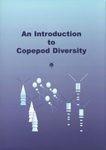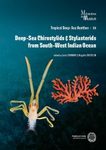Call us (08:30-16:00 UK)
+44 (0) 1803 86 59 13International
+44 (0) 1803 86 59 13Brauchen Sie Hilfe?
HilfeWichtiger Hinweis für Kundinnen und Kunden aus den USA
Datenerfassung und Monitoring
- Aquatic Survey & Monitoring
- Professional Hand & Kick Nets
- Water Testing
- Waders & Aquatic Safety
- View All
- Amphibian & Reptile Survey
- Amphibian Survey & Monitoring
- Reptile Survey & Monitoring
- Scales, Balances & Holding Bags
- View All
Feldführer und Naturgeschichte
Akademische und professionelle Bücher
- Evolutionary Biology
- Evolution
- Human Evolution & Anthropology
- Cladistics, Phylogeny & Taxonomy
- View All
British Wildlife
British Wildlife is the leading natural history magazine in the UK, providing essential reading for both enthusiast and professional naturalists and wildlife conservationists. Published eight times a year, British Wildlife bridges the gap between popular writing and scientific literature through a combination of long-form articles, regular columns and reports, book reviews and letters.
Conservation Land Management
Conservation Land Management (CLM) ist ein Mitgliedermagazin und erscheint viermal im Jahr. Das Magazin gilt allgemein als unverzichtbare Lektüre für alle Personen, die sich aktiv für das Landmanagement in Großbritannien einsetzen. CLM enthält Artikel in Langform, Veranstaltungslisten, Buchempfehlungen, neue Produktinformationen und Berichte über Konferenzen und Vorträge.











![Les Coléoptères Saproxyliques de France: Catalogue Écologique Illustré [The Saproxylic Beetles of France: Illustrated Ecological Catalogue]](http://mediacdn.nhbs.com/jackets/jackets_resizer_medium/24/247761.jpg?height=150&width=107)
![Atlas des Reptiles du Cameroun [Atlas of Reptiles of Cameroon]](http://mediacdn.nhbs.com/jackets/jackets_resizer_medium/17/172841.jpg?height=150&width=100)

![Atlas des Orchidées Sauvages de la Guadeloupe [Atlas of Wild Orchids of Guadeloupe]](http://mediacdn.nhbs.com/jackets/jackets_resizer_medium/12/127834.jpg?height=150&width=99)
![Les Crustacés Décapodes des Petites Antilles: Avec de Nouvelles Observations pour Saint-Martin, la Guadeloupe et la Martinique [The Crustacean Decapods of the Lesser Antilles: With New Observations for Saint-Martin, Guadeloupe and Martinique]](http://mediacdn.nhbs.com/jackets/jackets_resizer_medium/24/245203.jpg?height=150&width=106)
![Les Reptiles des Pyrénées [The Reptiles of the Pyrenees]](http://mediacdn.nhbs.com/jackets/jackets_resizer_medium/22/228868.jpg?height=150&width=107)
![Atlas des Poissons et des Crustacés d'Eau Douce de Nouvelle Calédonie [Atlas of Fish and Crustaceans of New Caledonia]](http://mediacdn.nhbs.com/jackets/jackets_resizer_medium/14/144631.jpg?height=150&width=98)

![Atlas des Oiseaux Marins et Cétacés du Sud Gascogne: De l'Estuaire de la Gironde à la Bidassoa [Atlas of Seabirds and Cetaceans of Southern Gascony: From the Estuary of Gironde to Bidasoa]](http://mediacdn.nhbs.com/jackets/jackets_resizer_medium/24/245210.jpg?height=150&width=105)
![Guide de la Faune Profonde de la Mer Méditerranée: Explorations des Roches et Canyons Sous-Marins des Côtes Françaises [Guide to the Deep-Sea Fauna of the Mediterranean Sea: Explorations of the Submarine Rocks and Canyons of the French Coasts]](http://mediacdn.nhbs.com/jackets/jackets_resizer_medium/23/236563.jpg?height=150&width=106)
![Atlas des Poissons et des Crustacés d'Eau Douce de la Martinique [Atlas of Freshwater Fish and Crustaceans of Martinique]](http://mediacdn.nhbs.com/jackets/jackets_resizer_medium/13/133745.jpg?height=150&width=98)
![Atlas des Poissons et des Crustacés d'eau Douce de Polynésie de Française [Atlas of Freshwater Fish and Crustaceans of French Polynesia]](http://mediacdn.nhbs.com/jackets/jackets_resizer_medium/14/141668.jpg?height=150&width=97)




![The Encyclopedia of the Swedish Flora and Fauna, Kräftdjur: Krill – Tiofotade Kräftdjur [Swedish]](http://mediacdn.nhbs.com/jackets/jackets_resizer_medium/26/268174.jpg?height=150&width=118)








![Flora of Cambodia, Laos and Vietnam, Volume 36 [Faune et Flore Tropicales, Volume 47]](http://mediacdn.nhbs.com/jackets/jackets_resizer_medium/24/245033.jpg?height=150&width=101)
![Flora of Cambodia, Laos and Vietnam, Volume 37 [Faune et Flore Tropicales, Volume 52]](http://mediacdn.nhbs.com/jackets/jackets_resizer_medium/26/266628.jpg?height=150&width=103)
![Les Chauves-Souris de Guyane [The Bats of French Guiana]](http://mediacdn.nhbs.com/jackets/jackets_resizer_medium/13/134247.jpg?height=150&width=100)
![Atlas des Mammifères Sauvages de France, Volume 3: Carnivores et Primates [Atlas of Wild Mammals of France, Volume 3: Carnivores and Primates]](http://mediacdn.nhbs.com/jackets/jackets_resizer_medium/26/263780.jpg?height=150&width=106)




